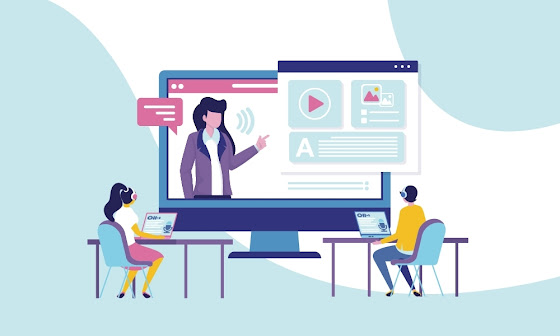It's clear that the pandemic has changed our entire outlook on online learning. Certainly, online learning is an essential part of what we do - but recent experiences shed light on the problems that exist within it. Online learning, as it exists today, has had a rough time of it.
(This article has minor edits since it was published in Ed Tech Digest.)
The current learning platforms start from the foundation of content recall, yet we need to move far beyond that to target more meaningful skills. The pandemic highlighted this need, and it represents a clear opportunity for growth. We need to rethink the way we deliver learning in order to target the skills we want.
We know what good learning should look like. Technology doesn't have to drive that learning, but it certainly shouldn't hinder it. If we start from the shallow premise that learning happens when we upload resources so that students can demonstrate a superficial understanding of that content, then we're already two steps behind. Anything else can only come as an add-on.
Project-Based Learning (PBL) believers have advocated for years about what good learning looks like. They know that we need to let students take ownership of their learning. We need projects where it's impossible not to demonstrate skills like creativity, critical thinking, collaboration, communication. and citizenship.
In his summary of Harvard professor Eric Mazur's work with physics students, Alan November paints a vivid picture of this active social learning and highlights the learning gains that are associated with it.
By making the learning a socially interactive experience, where students are discussing and debating the problems with each other, Dr. Mazur has found that his Harvard students are much more engaged in the class—and they also learn more from each other than they learned from him alone. In fact, he has seen achievement gains that are three times greater than what he experienced when he used to lecture.
- Alan November, November Learning
The learning happened in the doing. Doing research, connecting information sources, trying something out, trying again, learning, watching more videos, reading more websites, and doing. That’s where the learning occurred.
- Jeff Utecht, The Thinking Stick, September 19, 2019
Are our current learning platforms set up to facilitate this kind of learning? Are they primarily designed for (instead of merely accommodating):
- Fostering student creativity?
- Social learning: connecting learners?
- Purposeful learning: Asking students to apply their knowledge by developing solutions to relevant problems?
- Allowing learnings to give one another feedback in a variety of ways?
- Creating a learning community where we learn from one another, not simply the instructor?
The unfortunate answer to these questions is "no."
If we start with these outcomes as our goals, then we have to start looking for ways to enhance or go beyond many of the current learning platforms we use. That is a mindset decision that lies within us first and foremost, not a technology issue.



Comments
Post a Comment